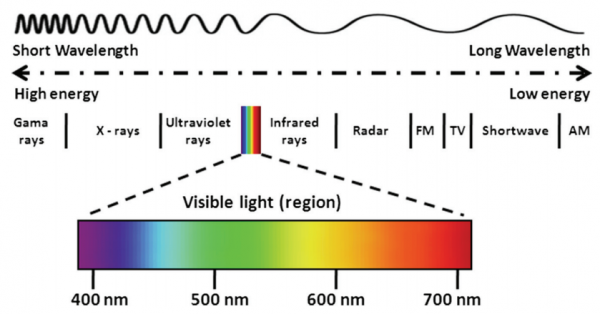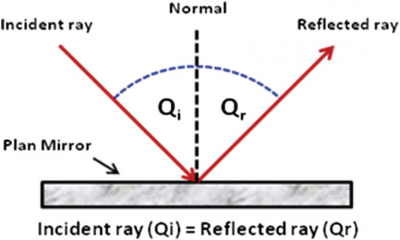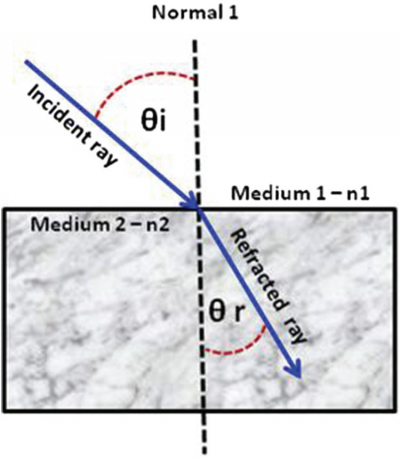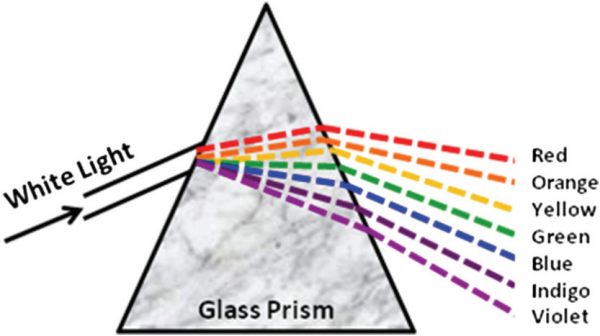The nature of light
The term “light” is usually used to mean wavelengths visible to human eyes, even though it sometimes refers to the electromagnetic radiation of any wavelength, visible or not. Light is electromagnetic radiation and has a wavelength range (in the visible, VIS) of ~400 nm (0.4 mm) to ~700 nm (0.7 mm), as shown in Fig below. It is a part of the electromagnetic spectrum that also includes the infrared range and the ultraviolet range.

The main properties of light include the following:
• Speed: The speed of light in vacuum is 299,792,458 meters per second (m/s), one of the fundamental constants of nature.
• Reflection: When light is reflected off any surface, the angle of incidence Qi is always equal to the angle of reflection Qr.

• Refraction: Refraction is the bending of light (wave) as it passes between materials with different optical densities (different speeds), as illustrated in Fig. below, The refraction of light passing from a fast medium (e.g., air) to a slow medium (e.g., BK7, Schott optical glass) bends the light direction toward the normal of the boundary between the two media.
The amount of bending depends on the refractive index of the two media and is described quantitatively by Snell’s law, named for Willebrord Snell, who discovered the law in 1621.

where n1 is the refractive index of medium 1, n2 is the refractive index of medium 2, ui is the angle of incidence, ur is the angle of refraction, v1 is the velocity of light in medium 1, and v2 is the velocity of light in medium 2. Note that n ¼ c/v, where c is the speed of light in vacuum, and v is the speed of light in the medium.
Dispersion: Dispersion in optics describes the splitting of light into its composed colors. Light comprises waves of different wavelengths that represent different colors. When light passes through a transparent medium, each wavelength refracts in a different direction, separating all of the colors. This phenomenon can be seen when light passes through a triangular prism, as in Fig. below, creating a rainbow.

